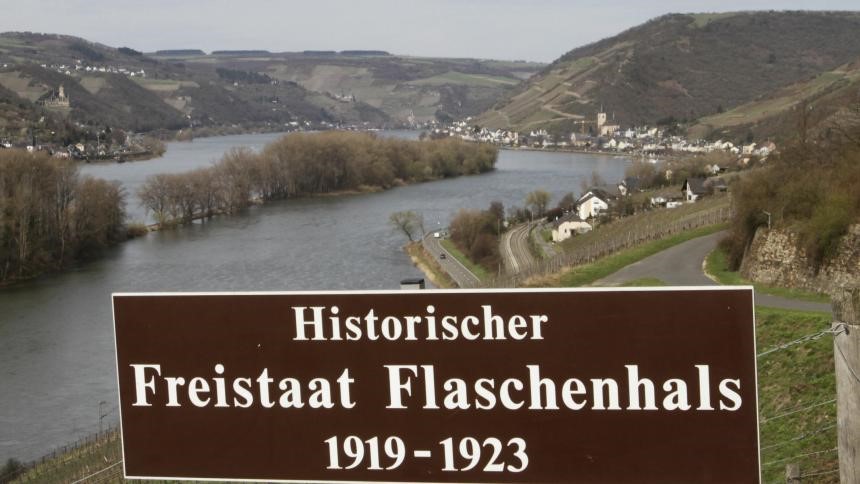The Dragon’s Voice
Happy New Year! In this edition, we have an article on a “bus trip” to the Somme, Cambrai, and Ypres, and one on a new country unintentionally created by the Versailles Treaty.
Trevor
The Programme for 2019
March 2nd: Andy Lonergan - 21st Division
May 4th: Vern Littley - Le Cateau
June 8th: Peter Hart - The Last Battle
Six Men in a Bus
Keith Walker
The idea for our trip started in April 2017 on our North Wales WFA trip to the battlefields with Steve and Nancy Binks, when Peter Chadwick said he would like to stand by his uncle's grave 100 years to the day that he was killed. His uncle, Pte G.O. Jones s/n 87487 of the Royal Welsh Fusiliers, was k.i.a. on the 8th October 1918, on the first day of the second Battle of Cambrai and is buried at Bois-des-Angles CWGC Cemetery plot 1B4.
From this, the idea grew, and it was suggested that we try and visit as many graves and memorials of our soldiers from the Broughton and Brymbo area.
So, the planning started. We needed accommodation, but what type? Transport, but would we need a minibus? Could we visit both the battlefields of Flanders and the Somme? What about including the early battles of Loos and Arras? So, over the next few months maps were looked at. Cemeteries and memorials were identified and routes planned.
Then came the big questions of who was going, and what would be the cost? Prices were obtained for hotels, bed and breakfast place, self-catering and minibus hire. Ferry crossing times and prices were researched, as was the cost of food.
It was decision time. So, who was going? Well, Peter Chadwick was a given. Phil Coops and Mike Groce wanted to photograph the soldiers’ graves whose names are on our memorial gates. Then, James Nuttall said we could not go without him. Keith Walker, who has visited the battlefields many times, was the tour guide.
Then we hit our first snag, as none of us could drive the minibus - all too old. So, Philip Walker volunteered to drive the minibus. James Nuttall called the tour “six men in a bus”. Philip Walker called it “five geriatrics on tour”.
Each member of the group was given a specific job to do on the tour.
Philip Walker ---- Driver
Peter Chadwick ---- Navigator and toll operator
Mike Groce ---- Main photographer
James Nuttall ---- Logistics and catering (cook)
Philip Coops ---- Officer in charge of cleaning of house and vehicle (housemaid)
Keith Walker ---- Tour guide
The only way I can now describe the tour is in the form of a dairy:-
Wednesday 3rd October 2018
On Wednesday afternoon, we picked up the minibus. We filled it up with fuel and then went to the supermarket for our basic supplies of bread, milk, coffee, tea, bacon, eggs, cereal, sugar and toilet rolls. At 9pm, we picked up Phil Coops and James Nuttall in Pentre Broughton, then made our way to Nantwich for Mike Groce and to Crewe for Peter Chadwick. At 10.30 pm, we started our journey down the motorway to Dover to catch the 6.40 am ferry, stopping on the way for comfort breaks.
Thursday 4th October 2018
We arrived at Calais at 9 am. After disembarking, we joined the motorway for a few miles towards Boulogne. Here we stopped for our first cemetery Terlinethun British Cemetery to visit our first soldier John Peter Griffiths s/n 345085 RWF d.o.w. on the 5th November 1918. His epitaph on his headstone reads: “Brymbo Wales”. Also in this cemetery is the grave of Percy Edwards s/n 93656 RWF. Percy died from wounds on the 28th September 1918. Percy was from Cefn Mawr. The historian and archaeologist Professor Peter Doyle has written a book “Percy, a story of 1918” about Percy. Professor Doyle found the letters of Percy’s girlfriend Kitty in a flea market in London and after a lot of research produced this book which is aimed at young readers. An educational program of events in Wales are in the planning stage based on this book.
From Boulogne we travelled to Etaples to meet representatives of the Commonwealth War Graves Commission. In this cemetery, the largest in France with 11,515 graves, is one of our soldiers, Frank Evans s/n 87145 RWF who died of wounds on the 28th October 1918. Frank’s wife Hannah put a poem in the Wrexham Advertiser in 1919 on the anniversary of his death which reads:-
If only I could have raised his dying head
And heard his last farewell
The blow may not have been so great
To me, who loved him well
Dear Frank, You are sleeping your last long sleep
And your grave I may never see
May some loving hand in that distant land
Gently place some flowers for me.
We laid some flowers.
At Amiens, we saw the prison which was bombed by the Royal Air Force in the Second World War to release French resistance fighters. The raid became known as “Operation Jericho”. We also looked at the Amiens cemetery and the graves of the RAF pilot and navigator who were shot down during this raid.
At Puchevillers CWGC Cemetery, we made a personal visit for Phil Coops. One of his family lies here. [Editor’s note – Phil's relation is buried four rows behind where my granddad is.]
Our last cemetery of the day was at Toutencourt Communal Cemetery. This cemetery has just 23 graves in it. (See Dragons Voice newsletter, March 2018 ).
We arrived at 5 pm at our gite, Les Alouettes, 10, Rue de Mantier 80360 Hardecourt-aux-Bois. We were met by our hosts Vic and Diane Piuk. It had been a long, tiring, but rewarding day.
Friday 5th October 2018
After breakfast made by our cook, James Nuttall, we planned to spend the day on the Somme battlefield. This gave our driver some respite. Our first cemetery was the large German Cemetery at Fricourt. We always try and visit the German cemeteries and pay our respects to their soldiers, after all they were someone's son, husband, brother or father. Also at Rancourt is a large French cemetery.
In between, is a small British battlefield cemetery with 93 graves. From Rancourt, we made our way to the Butte de Warlencourt, a piece of high ground held by the Germans, which gives a panoramic view of the Somme battlefield. Our next stop was the Canada Memorial, then on to Adanac cemetery and Queens cemetery to lay crosses on our local soldiers. After a short stop at the Ulster Tower, we then spent some time at the Thiepval Memorial to the missing. On the memorial, there are over seventy thousand names of the missing listed. We were looking for eleven of our soldiers. We then moved to the Pozieres Memorial and cemetery. At Pozieres memorial, I laid a cross to Captain Garnet George Green MC and bar who was k.i.a. on the 22rd March 1918. Captain Green was born in Pretoria South Africa and he served with the SA Infantry. I met his family when I visited my son in SA. They asked that if I was ever in that area would I lay a cross. It was an honour and a privilege to do so. We ended the day at La Boisselle at the area known as the Glory Hole. Here we saw where William Arthur Lloyd s/n 121706 Royal Engineers is still entombed in one of the tunnels which they were digging for the large mine named Lochnagar. At the Lochnagar crater, we found the private memorial plaque to William Arthur Lloyd s/n 121706 RE, date of death 19th December1915.
Saturday 6th October 2018
An early start for what was going to be another long day, we set out up the motorway to Belgium and the Ypres Salient. The salient was the scene of five major battles during WWI. On the way we stopped at the Royal Irish Rifles cemetery at Laventie to lay a cross at one of our soldiers, then on to the new Ploegstreet Experience. This is a new museum which explains the battles in and around the salient. At the Ploegstreet Memorial, we paid our respects to a family member of Phil Coops.
We then visited a number of cemeteries in the Southern area of the salient laying crosses to our soldiers. Just off the Messines Ridge we looked at Bethlehem Farm. This farm was where Adolf Hitler spent some time resting and recuperating after being wounded.
We arrived in Ypres at 6pm which gave us time for a meal before going to the Menin Gate to watch the ceremony of the Last Post at 8pm. We arrived back at our gite at 10 pm slightly worn out. Then, we prepared to do all it again the next day.
Sunday 7th October 2018
Another early start, back up the motorway to visit the northern area of the Ypres Salient.
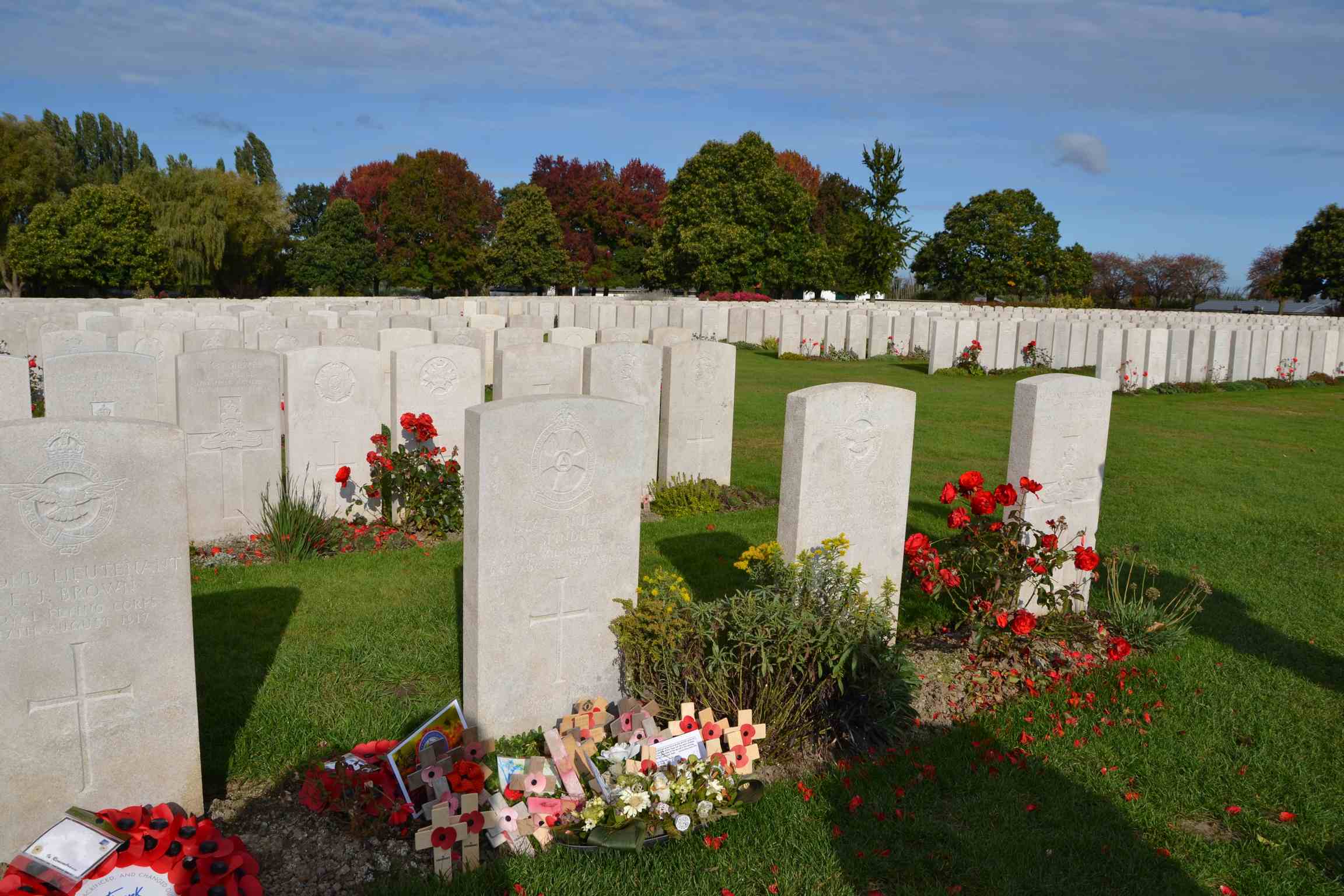 Our first stop was at Lijssenthoek cemetery to look at the grave of Staff Nurse Nellie Spindler the only nurse killed and buried in Belgium. She is a heroine of Keith Walker and also one of his “girlfriends” on the Western Front, as he always visits her when he is in Belgium (photo right). In this cemetery, lies another one of our soldiers, Sergeant Thomas Bishop s/n 9658 R.W.F d.o.w. 27th October1917. We laid a cross and paid our respects.
Our first stop was at Lijssenthoek cemetery to look at the grave of Staff Nurse Nellie Spindler the only nurse killed and buried in Belgium. She is a heroine of Keith Walker and also one of his “girlfriends” on the Western Front, as he always visits her when he is in Belgium (photo right). In this cemetery, lies another one of our soldiers, Sergeant Thomas Bishop s/n 9658 R.W.F d.o.w. 27th October1917. We laid a cross and paid our respects.
From Lijssenthoek, we proceeded into Poperinge which was a centre for rest and recuperation for all of our soldiers. It is situated about six miles behind the front lines. Here we went to see Talbot House were Toc-H was started. In the house, officers and men were all treated the same. The men could get a cup of tea, and please note that this tradition still applies. You could borrow a book from the library but you had to leave your cap as a deposit. Alternatively, you could rest in the peaceful garden at the back of the house.
Behind the town hall, which in the war was the main headquarters, are the “death cells” prison cells where soldiers stayed before their trial. Some were sentenced to be “Shot at Dawn”. After lunch, in Poperinge there was another of Keith Walker's “girlfriends” Ginger (photo right). Ginger was the daughter of the owner of one of the cafe/bars that the soldiers visited and was very popular with them. She is now a wonderful statue on the main square. We then visited a number of cemeteries in the Northern Area to lay crosses to our soldiers. Of note are the names of these cemeteries reflecting their first use as part of the Casualty Clearing Stations.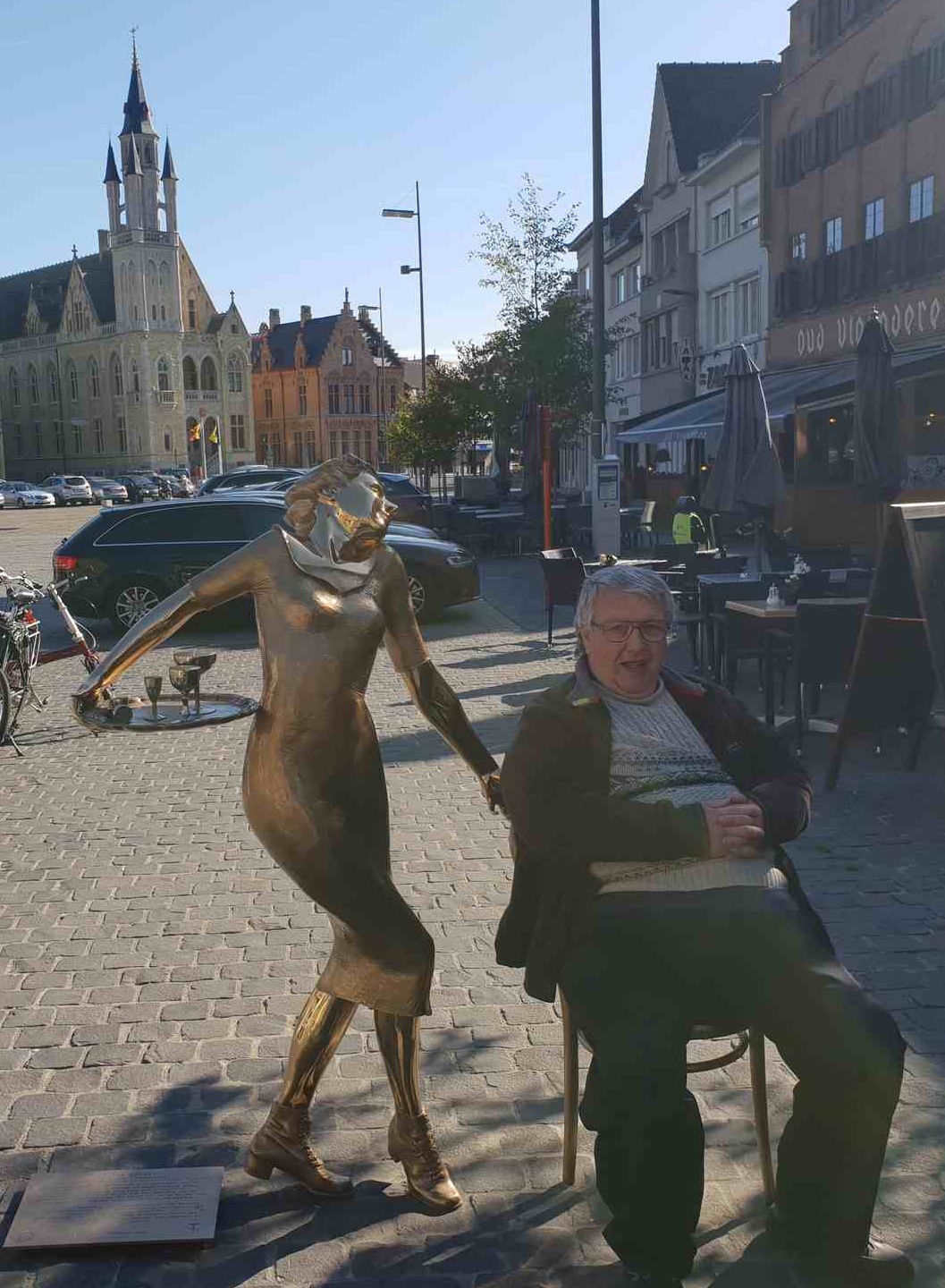
Dozinghem and Mendinghem are just two. The nurses had a sense of humour when they named them.
At Brandhoek we saw the grave of Noel Chavasse the only man in WWI to be awarded two Victoria Crosses. He was a doctor with the RAMC. We spent the late afternoon and evening in and around Ypres visiting as many cemeteries as we could before getting a meal and watching the Last Post ceremony. We arrived back at our gite at 10.30 pm after a very rewarding day.
Monday 8th October 2018
Today was one of the main reasons we planned this trip. The 8th October 1918 was the first day of the second battle of Cambrai. At this battle, the Royal Welsh Fusiliers lost a lot of officers and men. One of them Pte G. O Jones s/n 87487 RWF k.i.a. 8th October 1918 from Tan-y-Fron and was Peter Chadwick’s uncle.
So, our first cemetery was Bois-Des-Angles where Peter Chadwick laid down eighteen crosses to his uncle and other local men, five of whom are on our memorial gates. We stayed at the cemetery for some time as other families turned up on the anniversary of this battle. We spent some time exchanging family stories. This was one of the most emotional periods we felt on all the tour. So many of our soldiers with the same date of death.
We then visited a number of cemeteries in and around Cambrai where many more of our soldiers are buried. We had a picnic lunch at the Cambrai Memorial at Flequieres and then made our way to visit another of Keith Walker's “girlfriends” “Deborah”, a Mk IV British Tank which is now a French National Memorial (photo right below). The tank “Deborah” was found by local historian, Philippe Gorczynski, and dug up in 1998. It was located in a local barn for a number of years. Then, the French Government realised its importance and built a new state of the art museum which is situated alongside the Flequieres Hill Cemetery. In the cemetery, four of “Deborah's” crew are buried.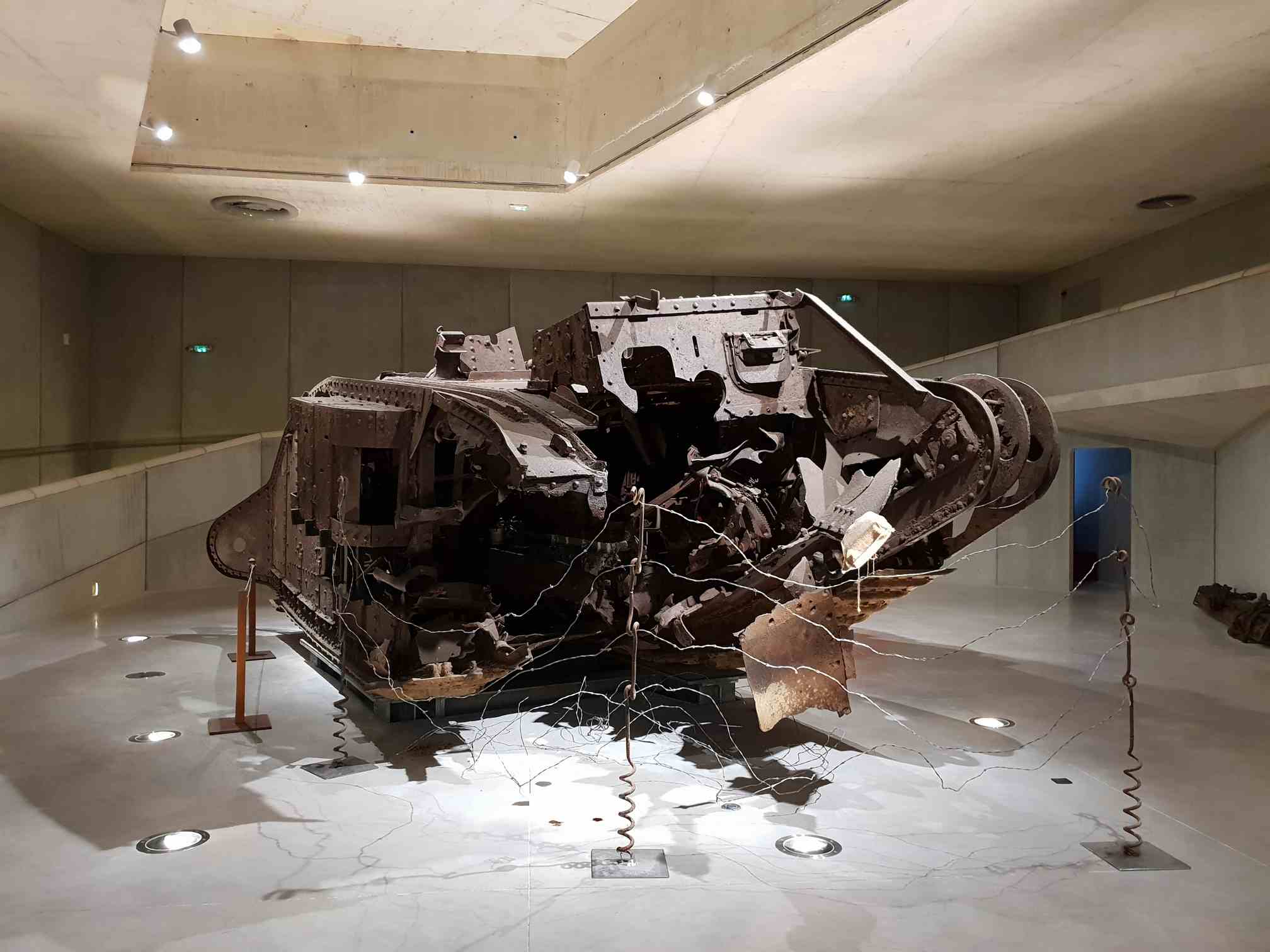
From Flequieres, we travelled to the two major memorials of the battle. One at Louverval and the Vis-en-Artois Memorial to the missing near Arras, where a number of our soldiers are listed. We returned to our Gite, so ending a very emotional day.
Tuesday 9th October 2018
Today was our sightseeing day and mopping up any cemeteries we had missed on Friday.
At Albert we saw the Golden Madonna and child above the Basilica. We spent some time at the WWI museum which is situated in tunnels under Albert.
At Villers-Bretonneux, we looked at the very impressive Australian War Memorial and Cemetery. During the day we still managed to visit ten cemeteries where we had some of our soldiers buried. We ended the day at Mametz Wood and the memorial to the 38th Welsh Division.
Wednesday 10th October
It was time for us to return home. We bid farewell to our host Diane Piuk and thanked her for her help with information on parking, tolls, routes, etc. On the way to Calais, we stopped at the Canadian War Memorial at Vimy Ridge. Then visited six other cemeteries of the early battles of Loos and Arras putting down crosses on our soldiers who died in 1914/15 and 1917.
At Calais, we boarded our ferry for home. Then we had the journey on the M25, M40, and M6. We arrived home at midnight.
So ended a very memorable tour. We drove 1600 miles, visited 62 cemeteries/memorials and laid 92 crosses to our soldiers. But we did not only remember the soldiers on both sides but also the women who served with the forces, and especially the nurses, of whom over 400 died in W.
Keith Walker is already planning to re-visit his “girlfriends”, Nellie, Ginger and Deborah, but just don't tell his wife!
References and acknowledgements: CWGC
A new country, unintentionally created
Trevor Adams
One of the bizarre, and unintended, consequences of the Versailles Treaty was the creation of a new mini-state on the east bank of the River Rhine. It lasted for four years – “Free State Flaschenhals” and, appropriately, “Flaschenhals” means “bottleneck”. The area of 10 km by 30km was completely cut off economically from the rest of Germany, by the Allies blocking roads to the east, and by the River Rhine to the west. It was all a big mistake.
The Versailles Treaty provided that the left (west) bank of the Rhine should be occupied by Allied troops, along with 30km bridgeheads on the right (east) bank. These bridgeheads were measured from the city hall of Cologne, for the British, Koblenz for the Americans and Mainz for the French. Somebody did not read maps well, for the American and French zones had a gap between them, at the narrowest it was one kilometre. Neither the Americans nor the French would admit the mistake. The contacts between the German civil administration and the Allies was very strained and no solution could be found to the situation of 17,000 German civilians who were caught in the middle.
In January 1919, the mayor of one of the towns, Lorch, took the matter in hand. He organised the printing of banknotes that were only valid in the enclave and sought in a roundabout way for the enclave to be responsible to the administration in Limburg.
So, with no official access to the outside world, everything had to be smuggled. Some of this was along forest tracks through the Taunus Mountains but it was simpler and more direct to use boats on the Rhine at night. The searchlights from the west bank, trying to seek out the smugglers’ boats, were a feature of the period, as was the youngsters of the towns “mooning” at the Allies in retaliation. The enclave managed to have some electricity via the French zone but a key issue was coal. In one famous episode, a trainload of coal from the Ruhr that was supposed to go to France as reparations was diverted by railway workers to the enclave.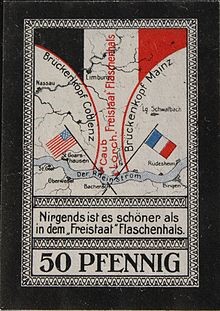
Right: a 50 penny note, with a map of the enclave between the American and French zones
The French officers themselves used the bars of the enclave when off duty. The enclave was never raided by the Allies!
By the middle of 1920, the Americans allowed some connections to the outside world.
It all came to an end at the start of 1923 when Belgian and French troops occupied the Rhineland east of the river, as part of a dispute over reparations with the new Weimar Republic, up to the edge of the American zone. So, the Free State of Flaschenhals lasted four years, one month and two weeks. If you go there today, the town has signs with “Free State of Flaschenhals” on them!